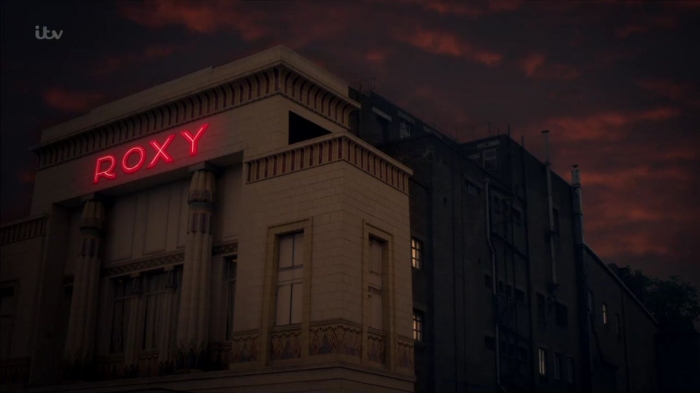
LATE NIGHT DOUBLE FEATURE
CARTOUCHE & PASSENGER
Interview copyright © Damian Michael Barcroft 2019
DAMIAN: You were surprised I liked CARTOUCHE. Why exactly?
RUSS: I thought you might find it too frivolous – too knowing.
DAMIAN: I’ve tried a couple of times in the past to get you to tell me what your favourite episodes are but without much success. Since you’re unlikely to budge on this, perhaps you might instead at least acknowledge that some episodes are more important than others?
RUSS: I don’t know if I’d agree with you over importance. To borrow from Marge Gundersson, ‘People always need the little stamps.’
DAMIAN: Let’s look at it from a different perspective then; would you agree that it is unlikely that ITV, Mammoth Screen or yourself would wish to open or close a series of a highly respected Sunday-night detective drama with an episode featuring a mummy on the rampage in Oxford?
RUSS: I would. But while we probably wouldn’t open or close a run with a CARTOUCHE like number, if the entirety of the series followed suit then things might get a little samey.
INT. ROXY/CINEMA SCREEN – DAY 1
In darkness. A crackly, repeating MORSE CODE signal.
— .–. …
Onscreen: Black and white art-deco 1930s FILM LOGO — ‘MAMMOTH PICTURES STUDIOS’ wrapped around a spinning globe topped with a radio antenna sending ‘lightning bolts’ into the ether. An airship circumnavigates the sphere, against the rotation of the planet.
MUSIC of a distinctly Egyptian theme BEGINS… Black and White — TITLES against shifting desert sands. “MERIAM C. DENHAM presents EMIL VALDEMAR in THE PHARAOH’S CURSE” “Screenplay by W.P. Mayhew” “Directed by Von Mayerling.” &c.
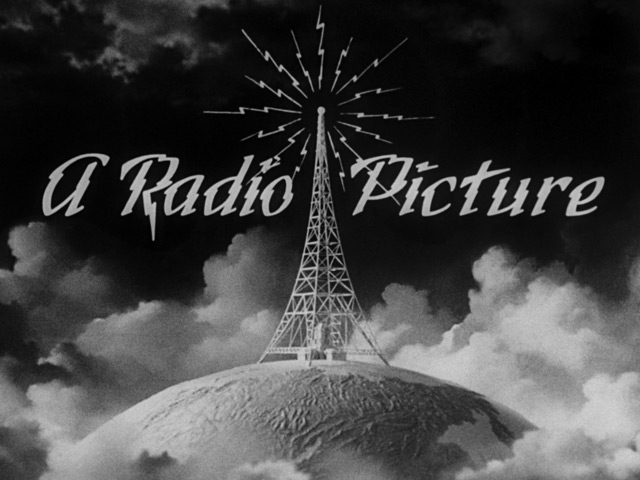

DAMIAN: The original description for the Mammoth Pictures Studio logo was more reminiscent of the old RKO and Universal Pictures from the late twenties and early thirties and significantly different from the screen version. At what point did you have the ingenious idea of actually using a mammoth?
RUSS: When we couldn’t clear the original homage. I think I’ve mentioned before the legal minefield of clearance.
DAMIAN: It’s not actually Cavendish though is it?
RUSS: Doubtless an antecedent.

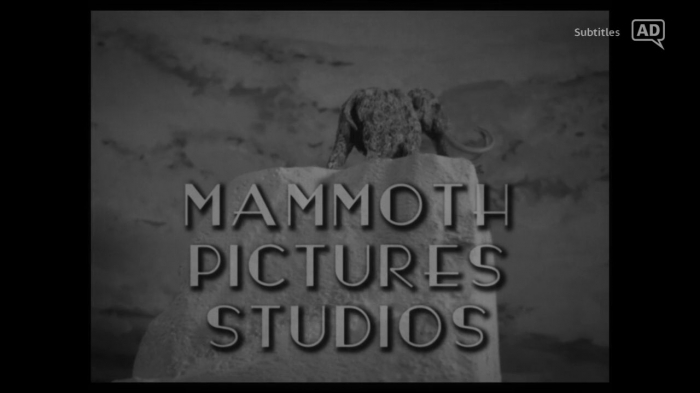
Production designer Paul Cripps designed and built the Mammoth Pictures Studio logo; basically carving an iceberg from poly, bought a Mammoth which he then painted and sprayed. The background was also painted and then he simply stuck both the iceberg and mammoth on a turntable.
DAMIAN: This treasure must surely be proudly housed safely behind glass at Mammoth Screen?
RUSS: Like the Anglia knight? Alas. I haven’t seen it around the office.
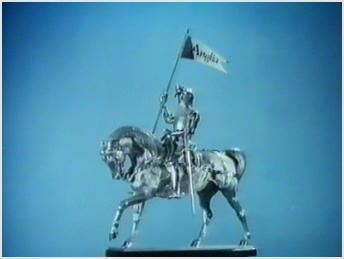
DAMIAN: I think I get that W.P. Mayhew was the drunken writer in Barton Fink, (Max) Von Mayerling was the silent movie director turned butler from Sunset Boulevard but is Meriam C. Denham a composite of King Kong director and producer Merian C. Cooper and the Carl Denham character from the same film?
RUSS: Full marks.
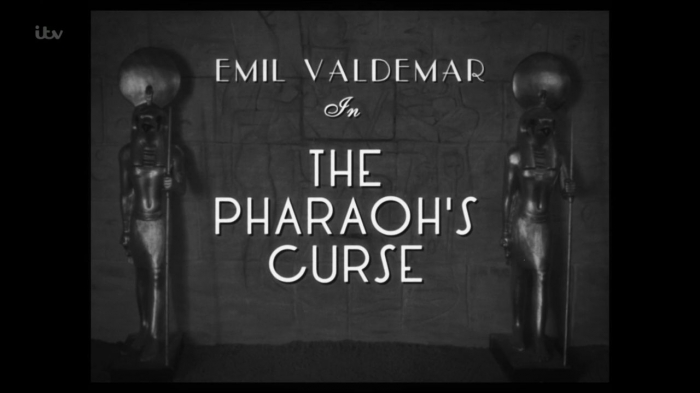
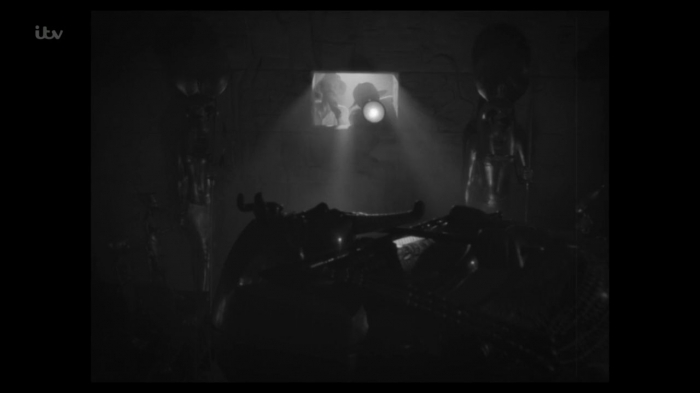

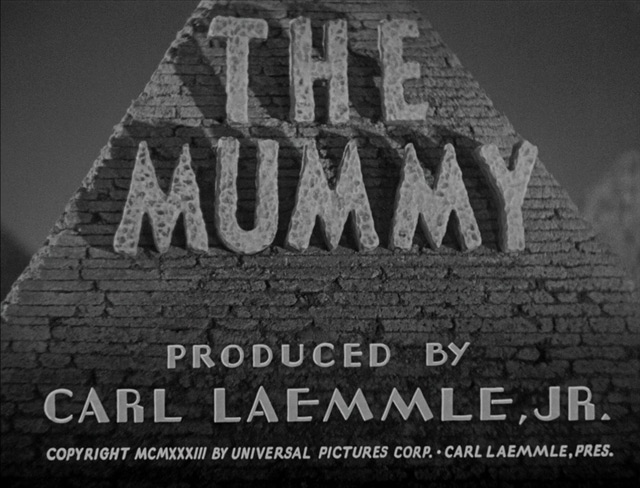
DAMIAN: And accompanying those opening film credits, we hear Matthew Slater’s music score. Now, Matt has been doing a fantastic job as composer for most of the last couple of years or so -I think PREY was his first full score?- but CARTOUCHE was simply stunning wasn’t it and almost indistinguishable from a big Hollywood film soundtrack?
RUSS: Matt’s an extraordinary talent, and his scores are a joy. His work has spared our blushes on many an occasion.
DAMIAN: There’s been some great scores for horror and fantasy films such as Max Steiner’s work on King Kong, music for the Universal Monster Cycle of the 30s and 40s by composers like Paul Dessau, Hans J. Salter, Frank Skinner and Franz Waxman, in addition to the various artists, perhaps most notably James Bernard, who scored the Hammer films. I’m wondering if you listened to any of these while writing CARTOUCHE or discussed them with Matt as reference points because there’s definitely a Hammer influence in his score isn’t there?
RUSS: Yeh, we talked about Waxman, and James Bernard.
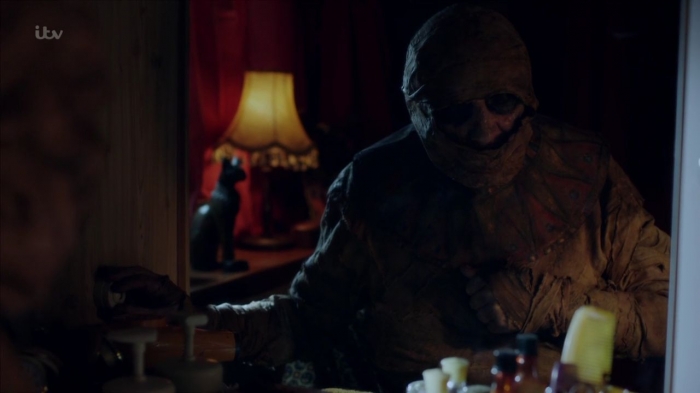
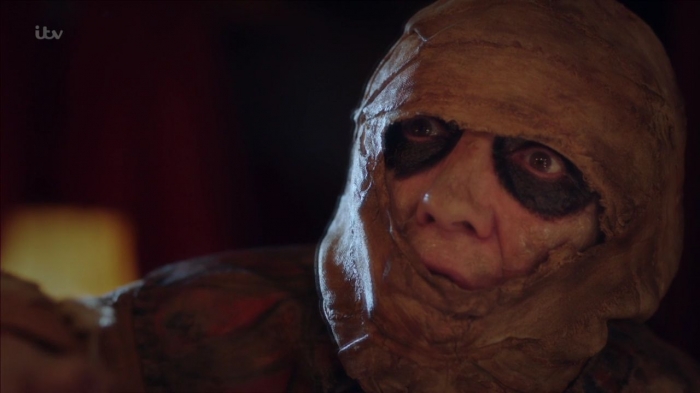
DAMIAN: It’s perhaps no coincidence that amongst Valdemar’s credits, Buddy and Louie Meet the Pharaoh is mentioned because of all the various costumes and makeup designs for the character over the years, the one in CARTOUCHE most resembles the one in (Budd) Abbott and (Lou) Costello Meet the Mummy. Was this slightly low budget design the look you were going for?
RUSS: Kind of. The Hammers also started to look a bit ragged – no pun intended – very quickly. It was meant to invoke something of a B-picture, knocked out very quickly, and on a limited budget. But Andy – our director – had a lot of fun with it.

DAMIAN: Despite having the most iconic makeup design, I’ve always found Karloff’s The Mummy to be a little slow and stagey much like Dracula as opposed to more cinematic masterpieces from Universal such Bride of Frankenstein, and actually much prefer Hammer’s The Mummy. Do you have a favourite?
RUSS: A favourite Universal or a favourite Hammer – or a favourite Mummy? I’m with you on Bride all the way.
DAMIAN: I meant a favourite Mummy. In comparison to other gothic literary characters such as Dracula, Frankenstein’s monster, Jekyll and Hyde etc., the Mummy is possibly the least interesting and I just wondered from a writers perspective, which film you thought provided the most engaging characterisation?
RUSS: Bubba Ho Tep. I suppose the first two Brendan Fraser/Rachel Weisz Mummy pictures. And of those two, the second probably gives you the biggest window on Imhotep’s history, doesn’t it? But – let’s be frank – as a franchise, it’s never been particularly deep, has it? I don’t think I mind the Karloff as much as you do. It is pretty slow, but it does set down all the key lore. Probably the least said about the latest incarnation the better.
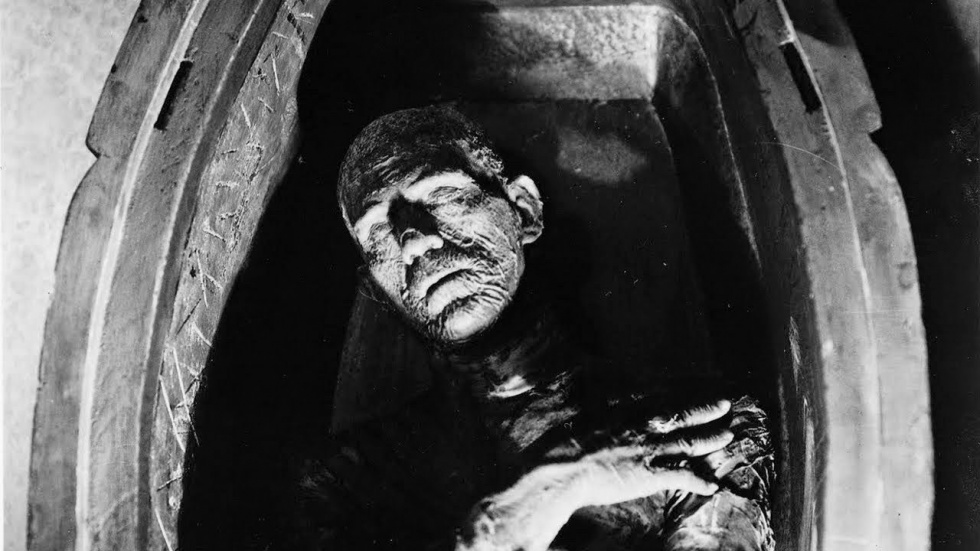
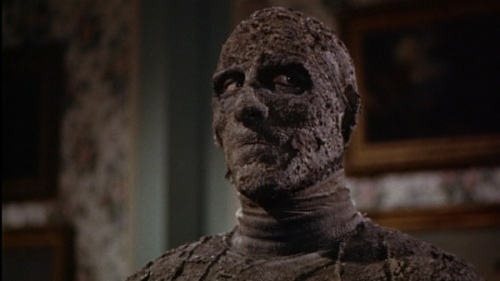
DAMIAN: After the success of individual horror character franchises such as Dracula, Frankenstein and the Wolf Man, Universal created a shared universe for these classic monsters. Now, considering that these films are meant to follow on from each other, it’s rather bizarre that Lionel Atwill is cast in so many and yet plays completely different characters including Inspector Krogh (Son of Frankenstein), Doctor Theodore Bohmer (The Ghost of Frankenstein), the Mayor (Frankenstein Meets the Wolf Man), Inspector Arnz (House of Frankenstein) and Inspector Holtz (House of Dracula). Regardless, with the nod to his name in the script and the character with the one arm, why has the memory of Atwill endured perhaps more than other supporting Universal character players such as my personal favourite, Dwight Frye?
RUSS: I think – as you say – it was probably Atwill’s presence in so many different incarnations that guaranteed his immortality. Ah – Dwight Frye. Will Dwight Frye make you Frye of Dwight?!


DAMIAN: I suppose in a similar vein to the Carry On films and other beloved institutes, Universal and Hammer had a repertoire of supporting roles players which we don’t quite see to the same extent in contemporary productions. Do you think that, in always striving to prove their versatility and avoid typecasting, it’s a pity we no longer enjoy character actors in the same way anymore?
RUSS: Well, a Hammer never really felt like a Hammer without the appropriately named Michael Ripper, did it? I just don’t think we make things the same way. The world changes. But I’m very grateful we’ve still got all those wonderful films, and those regular faces to enjoy.
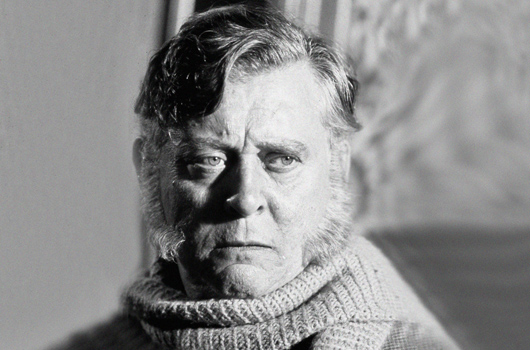
DAMIAN: And the Hammer Horrors featured many glamourous scream queens such as Valerie Leon and Ingrid Pitt but Veronica Carlson must still be a favourite who you mentioned in one of our early interviews and gets a nod in CARTOUCHE as Veronique Carlton. In your opinion, why is she the epitome of the 60s Hammer and British Horror scream queen?
RUSS: I think it’s that she pulled off that extraordinary back to back double in ‘68 and ‘69 with the Count and then the Baron. Dracula Has Risen from the Gravy — and Frankenstein Must be Dismayed.


DAMIAN: Apart from Bela Lugosi who died in 1956, which of the iconic horror actors would you have liked to have cast as Emil Valdemar if CARTOUCHE was actually made in the year in which it was set?
RUSS: Well — we were thinking about Bogdanovich’s Targets a lot – which was a big jumping off point for the story. So – it was Karloff the Uncanny, all the way. It would have had to be someone British and old enough to have served in the Great War.
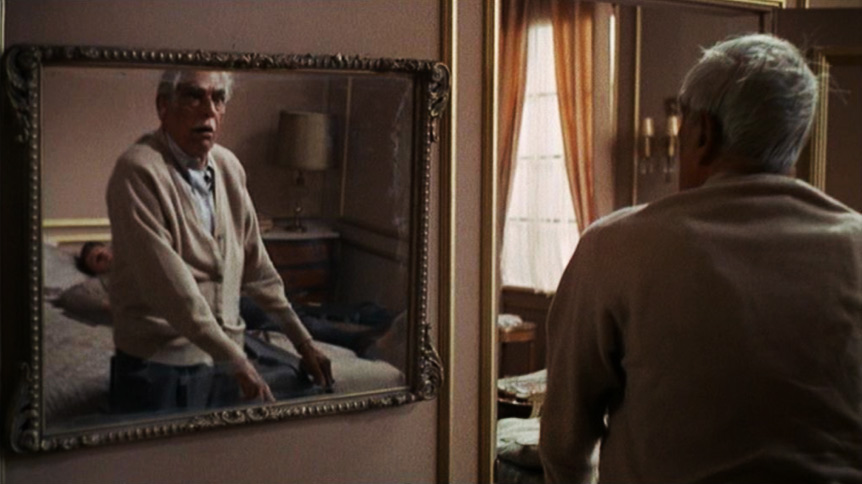

DAMIAN: As always, there’s so many references in the episode such as Fu Manchu, the Corman/Price cycle and Poe more generally, that we can’t possibly discuss them all, although I thought the nod to Lauren Bacall (Betty Perske/Persky) was particularly lovely because she was actually a theatre usher in real life wasn’t she?
RUSS: Exactly that.


DAMIAN: It was wonderful to see Thursday in such a (rare) good mood reminiscing about the cinema of his childhood although I was less impressed with Endeavour’s response – is he only interested in watching Ingmar Bergman films and -much later in life- Last Tango in Paris?
RUSS: Colin didn’t really give us much of a steer on his cinematic interests. But Endeavour’s recollection of Saturday Morning Pictures are mine. I’m not sure if it made the cut – but his invocation of Dante made Damien Timmer chuckle, which always pleases me.
DAMIAN: Yes it did, something about all that screaming in the dark. However, for someone who consistently shows such a reverence in their writing for classic cinema, I’m somewhat surprised and confused by such negative recollections of Saturday Morning Pictures. I would have thought you would have more in common with Thursday than Endeavour in this regard?
RUSS: Endeavour’s recollections are perhaps not unsurprisingly my recollection of the one and only trip I made to the Granada, St.John’s Hill for Saturday Morning Pictures. I can still hear the screaming.

DAMIAN: Starting with Carol this series, Endeavour begins his Casanova phase which I had a few problems with and hope to debate in a future interview, however, can you not think of a nice young lady to introduce to Strange for a change?
RUSS: Well — we have seen him out on a double-date with Endeavour – to a Horror Double Bill appropriately enough. Well — I look forward to discussing Endeavour’s Casanova phase. A one night stand with the least appropriate young woman imaginable – and a meaningful few months with Claudine, of whom he had hopes. Some Casanova phase. Surely such Homework would warrant, ‘Must try harder!’ in the margin?

DAMIAN: And speaking of other halves, Bright is eating alone in the restaurant because his wife is otherwise engaged yet again! Come on now Russ, this is getting quite ridiculous unless Reginald has perhaps buried her under the patio or keeping her well-preserved mummified corpse in the fruit cellar?
RUSS: It’s been quite fun keeping people guessing about Mrs.Bright. We shall see.
DAMIAN: Towards the end of the episode, Charlie says ‘You’re the best of us, Fred’, to which Thursday replies, ‘The best of us never came home’. Earlier, when reminiscing about Saturday morning matinees as a child, Thursday mentions to Endeavour that he’d go in first and then ‘spring the window in the Gents for Chas and Billy’. Can you tell us more about Billy, presumably the youngest of the three Thursday brothers, or is this perhaps something you might elaborate on in a future story?
RUSS: There is a story that tells us more about Billy – but whether we will get to make it is doubtful. The exchange rate has taken a bit of a hit since I first had it in mind — and probably rules it out.

DAMIAN: You make the parallels between ex-Detective Sergeant Ronald Beavis and Endeavour quite explicit with similar characters traits and shared interests including a passion for opera; the two even have the same Rosalind Calloway performance of La Traviata LP – oh, just out of curiosity, why were you so specific in the script that the record not have her image on the sleeve?
RUSS: Was I? I think I just wanted to avoid the LP Endeavour had signed in the very first film also being owned by Beavis. As if it were the ONLY Rosalind Calloway recording in existence.
DAMIAN: Anyway, after leaving the museum at the end of the episode, there’s a discussion of the parallels between Beavis and Endeavour and Thursday says ‘he’d no family to keep him on the straight. Lot to be said for family’, to which Endeavour replies, ‘What if you don’t have one? Is that how you finish your days? Alone in some two-bob kip with nothing but a bottle for company?’. Thursday ends the discussion with, ‘That was his future. Not yours. You’ll make better choices’. First of all, does Thursday really believe this, and secondly, would he, if not really approve, then reluctantly give his consent -at this particular moment in time at least- if such choices included Joan?
RUSS: I don’t think there’s any reason for Fred to think Endeavour won’t make better choices. His first thought would be of Joan’s happiness. If being with Endeavour made her happy, then I’m sure Thursday would be behind her all the way.


DAMIAN: Of course, we know how it ends for Endeavour, but the way the scene is written suggests that he does too. Let’s say, for the sake of argument, that loneliness is a subjective experience. For someone like Endeavour with all his emotional baggage and psychological damage, his loneliness and estrangement might foster a self-defeating attitude in that the more he marginalises himself, the more his protracted loneliness intensifies, and becomes increasingly difficult to break free from such a mindset that negatively influences his perception of relationships making him more pessimistic as to their outcome (as might be the case with Joan or Susan Fallon for that matter). To what extent would you agree with all this and has Endeavour -again, at this point in the story- accepted his fate or is he simply just a miserable sod?
RUSS: No – I don’t think he’s accepted his fate at all at this point. Did he ever? He always seemed optimistic when pursuing romance. In this instance, I think Endeavour was rattled by finding some similarities with Beavis – primarily, the music – and beyond that, the want of family. And, of course, he was an ex-copper.
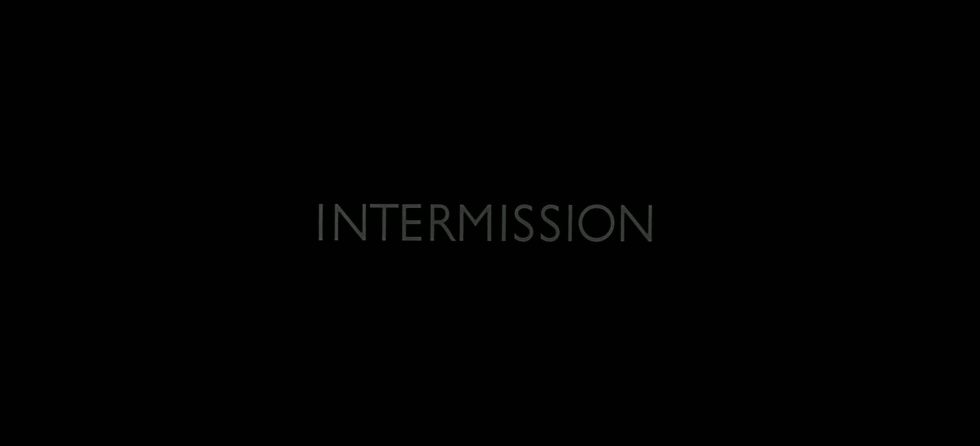
DAMIAN: And so without further delay or cancellation, we arrive at possibly one of the most beautifully shot films of this or any other series of Endeavour. You’ve often found inspiration from poetry during the conception and development of characters such as Thursday (Henry Reed’s Lessons of the War – Naming of Parts in particular) and Bright (Betjeman’s Subaltern’s Love Song), so I’m wondering if there’s any deeper significance to your inclusion of WH Auden’s Night Mail in PASSENGER beyond the theme of trains?
RUSS: Well – all credit to Jim Field Smith and DoP Jamie Cairney. For my part, it was just an early memory of a re-run of the 1936 documentary that ends with the verse. The British Documentary Film Movement is an endless source of wonder and inspiration. But ‘Night Mail’… probably melts a bit into the train journey in ‘I Know Where I’m Going’. Trains – particularly the old steamers – have an innate air of romance, mystery and – for our purposes – danger. That ‘The sigh of midnight trains in empty stations’ makes the list of ‘These Foolish Things’ is no accident. The Orient Express. The Blue Train. The 4:50 From Paddington. All aboard!
DAMIAN: Interestingly, Auden was addicted to the crime genre and had some very particular opinions about it which shaped the poem, Detective Story, and an essay on the subject, The Guilty Vicarage, in which he makes a series of observations while deconstructing the Whodunit formula including the discourse between good and evil, the ethical and eristic conflict between Us and Them and the dialectics of innocence and guilt, while also identifying its five essential elements: milieu, victim, murderer, suspects and detectives. Perhaps even more than Sherlock Holmes’ more cosmopolitan and diverse Victorian London for example, I wonder if it’s milieu that’s particularly applicable to the Morse Universe if we view Oxford as a kind of garden of Eden in which the various sins don’t necessarily attract evil to the city, but instead reveal the evil that already inhabits the dreaming spires hiding under the gown of piousness and respectability?
RUSS: ‘As the milieu told its tale…’ I think much of Auden’s take on the Whodunit applies particularly to the Golden Age and the notion of Mayhem Parva. It probably starts to break down when applied to Bay City. Oxford as a Garden of Eden? I guess I’m with you about the frailties of human nature residing there already – rather than something that arrives with an interloper. (Though that may change…) But no more or less than any other town of a like size. Don’t be fooled for a moment by the architecture. Or by the trappings of academe. The pursuit of knowledge for its own sake. A juicy and coveted Chair is just as likely to be pursued, as is the wife or daughter of another don. Clixby Bream come on down! That’s one of the many things Colin did so well in the novels. And he knew that world better than most. Where abideth man, there abideth sin.

DAMIAN: And perhaps Endeavour represents this loss of innocence more acutely than either Inspector Morse or Lewis ever did?
RUSS: Yes, I think that’s fair to say. We have a much younger protagonist. And a romantic to boot. He was always going to have much further to fall. But I think that one of the things about his older incarnation is some part of that hope still remains. That’s what lends it its melancholy. And, of course, it’s what redeems him.
DAMIAN: One aspect of Auden’s musings on the detective story that certainly can’t be applied to Endeavour is that the characters are not changed in or by their actions. Indeed, reflecting on the heartbreak and misery frequently bestowed upon Endeavour and Joan for example, how far are you willing to go in putting your loyal and loving audience on a downer?
RUSS: Does it bring the audience down, do you think? One of the great, unlooked for delights of writing this thing has been charting the push and pull of those binary stars. Who knew?
I don’t know about putting the audience on a downer, but how far am I willing to go with telling that story? All the way. Always.
EXT. JOAN’S FLAT/ROOF – DAY
JOAN clambers up through a skylight onto the roof. ENDEAVOUR follows. By the time he’s out and into the daylight, with the resultant queasiness of realisation that he’s up high. JOAN is at the edge, looking out over OXFORD.
JOAN: It was the view I fell in love with.
ENDEAVOUR’S POV: JOAN against a backdrop of magic hour Oxford – a sky of pink and pearl.
ENDEAVOUR: Yes.
A world contained in a single word. If his heart were to stop now, it would be enough. To die in the moment of perfection. Like…
ENDEAVOUR (cont’d): Cherry blossom.
His whisper lost on the breeze.
JOAN: You can’t see from there. Come closer.
ENDEAVOUR: This is as close as I get.
And it is. And ever will be.
ENDEAVOUR (cont’d): Come back now.
And it is. And ever will be.
JOAN: Scared of heights?
ENDEAVOUR: Not heights. Just falling…



DAMIAN: Fans may occasionally debate the merits of certain plot points and the motivation of various suspects or perpetrators but there can be little doubt that scenes such as this clearly demonstrate your transcendent and unrivalled talent for consistently writing characters in a detective drama that we all care about so very deeply. Knowing that you will almost certainly deflect the compliment in your now familiar self-effacing and reticent maner, I challenge you to give me an example of just one other detective drama written for TV that consistently delivers both the mystery and emotion of Endeavour.
RUSS: I don’t watch enough to have a representative sample upon which to draw. But, I think if all we were doing was constructing a puzzle for the audience to solve, it would be a very dreary exercise. A much bigger conversation probably, but, ‘Why write at all?’ Why tell stories? It’s about making a connection, isn’t it? One heart speaking to another. I think if you’re going to do it at all, then you have to be prepared to go all in. The audience can sniff out fakery at 500 yards. You might be dressing something up in slightly different clothes, or presenting it at one or more remove — but the initial impulse – the thing you’re having these characters saying – has to come from something real.
The plot and the whodunit are hugely important – but it’s the emotional beats that I suspect will outlast the conundrum. “All the feels”, as I believe the young people have it. Like the man said, “Nobody goes home whistling the scenery”.
DAMIAN: And then you almost go and spoil it all by following such a beautiful scene by having Claudine appear and Endeavour lighting a cigarette for her which I have two problems with: firstly, although I understand that one of the functions of the scene was Joan wanting to introduce Endeavour to someone who might look after him, doesn’t the smile he gives Claudine show his instant attraction to her despite having literally just walked away from Joan only seconds earlier and somewhat undermine his passion and love for Joan and all the pink, pearl and cherry blossom?
RUSS: C’est la vie, mon vieux.

DAMIAN: The second aspect was Endeavour lighting her cigarette; why would he even be carrying a lighter when he doesn’t smoke? – yet!
RUSS: You will recall Thursday’s advice to Trewlove concerning cigarettes. We forget now – in these more health conscious times – the social connection and conviviality that was part of the theatre of nicotine. “Cigarette?” was a great ice-breaker. An instant connection. For a detective dealing with those who have witnessed terrible things – to be able to offer a cigarette to someone ‘in shock’ was considered at the very least an act of kindness. Likewise – in interview, with a suspect or indeed the guilty party – the bestowal or withholding of tobacco – is a tool in the box. For Endeavour to be tootling about without a box of smokes would be a bit of a shortcoming.
DAMIAN: In response to my question in our last interview regarding how much longer the show could continue, you said that there’s a little way to go yet, but, you are starting to say goodbye. Therefore, given there’s a few other characters from the original series yet to make an appearance, I wonder if there’s still time to see Endeavour and Susan Fallon reunited and if so, is there even enough room for yet another doomed relationship – I mean how many great, ill-fated loves can one man have?
RUSS: I think it unlikely we’ll see Susan Fallon. The Prime Directive is all. Yet another doomed relationship? Well — given where we found him in ‘87 and left him at the end of century, one might argue that ALL his relationships were doomed. How many great, ill-fated loves can one man have? I’ll have to get back to you on that one.
Enter — DI RONNIE BOX, (30s), a young thief-taker, and DS PATRICK DAWSON, (30s), a mordant, humourless, career copper – a young Kenneth Colley.
BRIGHT: Ah. Perfect timing.

DAMIAN: Why now in this particular episode and what does Dawson’s relationship with Box say about his character here and in his future incarnation?
RUSS: There is perhaps more to tell on that score. We shall see if room is available.
DAMIAN: Unlike the antagonist DS Peter Jakes who audiences eventually began to warm to, there can’t be any such redemption for a character as despicable as DI Ronnie Box can there?
RUSS: Well, that’s the question, isn’t it?
DAMIAN: Was his introduction here planned to set up the character (and storylines) as a regular for the sixth series?
RUSS: Box certainly played into the evolution of the Sixth Series.
DAMIAN: I think we may have spoke about the use of clichéd and stereotypical archetypes before and how they can be both useful -especially in detective stories in terms of misdirecting the audience- but also dangerous for a writer. In retrospect, do you think that a stuttering trainspotter who still lives with his mother was a bit much?
RUSS: Clearly not. One might as well be hung for a sheep. The major story here concerned… well – it’s not possible to set down what it concerned without spoilers. But, one thing that did horrify me was a suggestion that one was presenting a character on the autistic spectrum. I’d grant ‘English eccentric’ and ‘flawed and malignant personality’- but when it comes to autism nothing could have been further from our intentions. A moment’s thought about that – given some of the things we’ve done elsewhere in the show – and I’d hope anyone would realise that, if such was indeed our intent, then we’d never engineer such a crass depiction.
DAMIAN: Did you ever have a train set?
RUSS: I did. Hornby. But like South West Trains, I could never get it to run properly.

DAMIAN: Some lovely cultural references again in this episode such as Norborough Station (60s Avengers) but I would have put money on nods to The Signal-man or Brief Encounter – did I miss them?
RUSS: We are ever constrained by what can be delivered. I had wanted to use the original location for The Signalman – but it lay far beyond our reach. ‘Hallo! Below there!’ Brief Encounter… I don’t know if it made the cut – but I’m pretty sure we’ve nodded to ‘taking books back to Boots’ elsewhere.


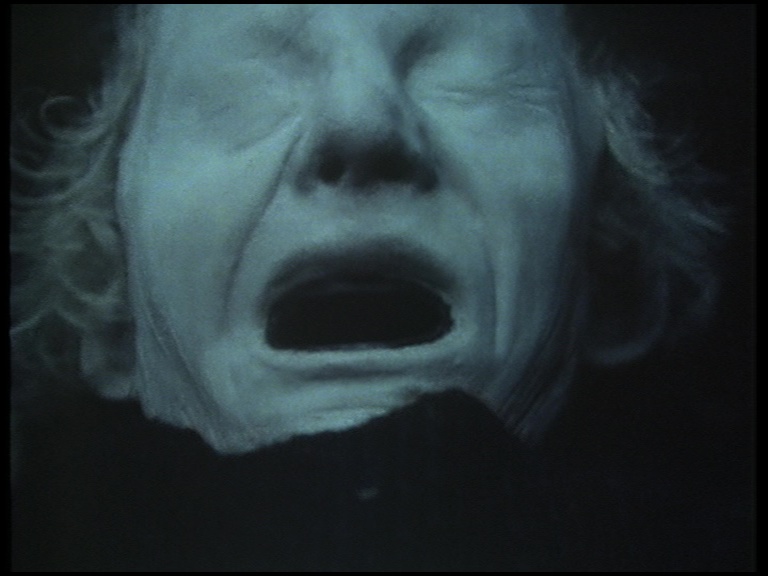
DAMIAN: I could have understood Bates Motel (indeed, there’s a slight reference: ‘Twenty-four chalets, twenty-four vacancies’) but bloody Crossroads Motel! You’ve given us countless tales that witness your fanaticism for Tony Hancock, Carry On films and The Beatles but why on earth would you even think of paying homage to such a decrepit piece of soap opera history?
RUSS: Damien Timmer is very fond of Crossroads, and was very keen to honour it. Lest we forget, when Miss Diane left Kings Oak, she tipped up in… of all places… a certain city of dreaming spires. Easy to knock, of course — but it once commanded huge audiences, and the viewing nation hung spellbound on the fate of Meg and Sandy and Jill, and all the rest
But as always with Endeavour, one might imagine it to be A Crossroads, rather than necessarily THE Crossroads. We rationalised it – kind of – thus, that once, perhaps, Hazel Adair and Peter Ling had taken a wrong turn on a lonely highway and ended up at our Crossroads, which had in turn inspired them to create their Crossroads.
You are right about Bates Motel, of course. In fact, I think in the original iteration of the script there was an extended night driving sequence for Endeavour before he arrived. Alas, time and budget, and poor man’s process, wait for no man. But I clearly thought it would have been funnier if we’d laid in a longer build-up to the reveal of his destination.


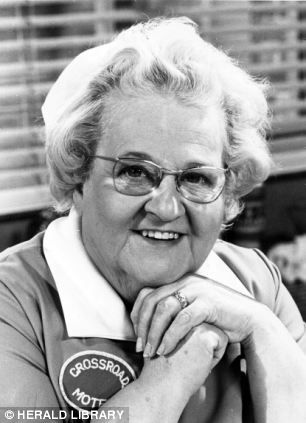
DAMIAN: And a certain Mrs. Turtle is referenced in the script and briefly seen on screen at the reception desk who looked remarkably similar to Ann George. Like Veronica Carlson, please tell me she wasn’t another one of your boyhood crushes?
RUSS: I worked at ATV in Brum for some time in the early 70s — and we would often see the stars from Crossroad in the canteen, or heading into studio. Ann George was quite glamorous in a furs and bling way – but, no, she never caught my imagination in quite the same way as Miss Carlson.
DAMIAN: What can you tell us about the second film of series 6, APOLLO?
RUSS: Er, well — Shaun’s directed it. And a very fine job he’s done, too. William Goldman’s advice was ‘Give the star everything.’ So – I hope the moon will suffice. Seriously – it’s quite spooky the way it worked out. Of all the films in all the series in all the world that he could have directed…
I’m sure I’ll have much more to say about it at a later date, but we were blessed to be joined on this film by Stephen La Riviere and his wonderfully talented team at Century 21. He brought with him some absolute pioneers of British film and television. So, for a couple of days, our pretend past reached out across half a century and joined hands with those who had lived the real thing. It also marks (and will remain) my only onscreen appearance in Endeavour, and proves that sometimes one’s childhood dreams really can come true.
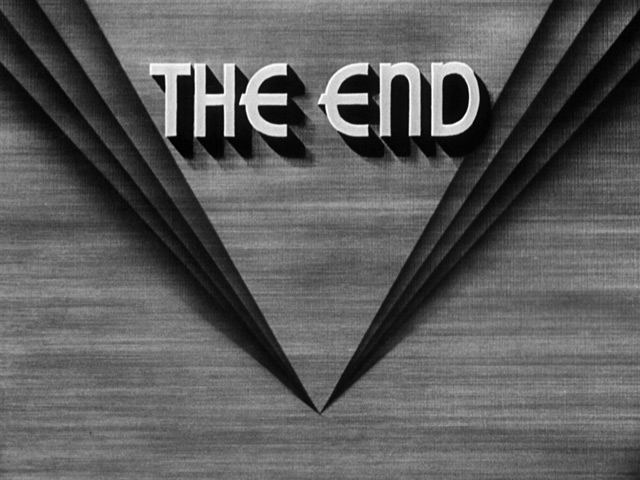

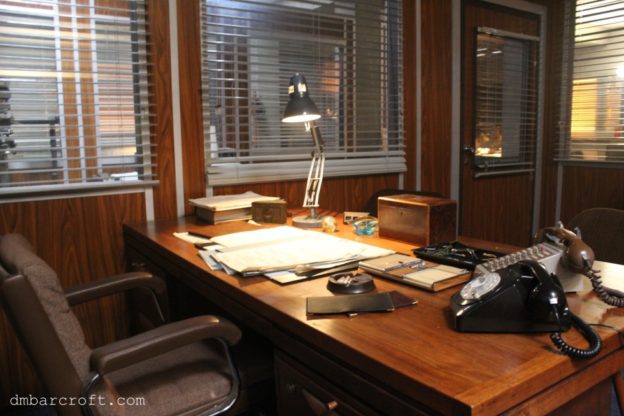
Two for the price of one! The discussion about Cartouche has inspired me go back to re-evaluate it. I found it fun at the time – especially spotting all of the cultural references – but ultimately left me looking forward to a more substantive episode, which Passenger delivered in spades.
Sorry to hear that the decline in exchange rate has curtailed the episode count (presumably the value of the US contribution to the budget has gone down?).
Fabulous interview! I just fortunately stumbled upon it. I have to say that Endeavour is the most engrossing, entertaining and thought-provoking program I have ever seen. The writing , the directing and the acting are exceptional. Thank you and all the team for this magnificent production. We in the States will be able to see Season 6 beginning on June 16. Thank you again.